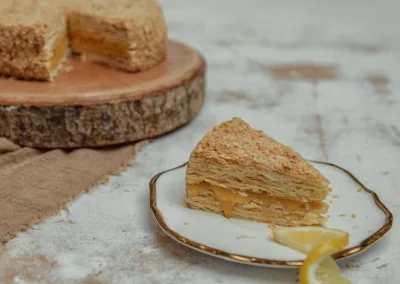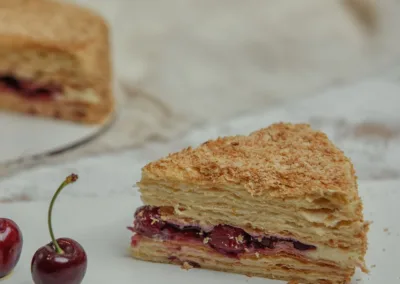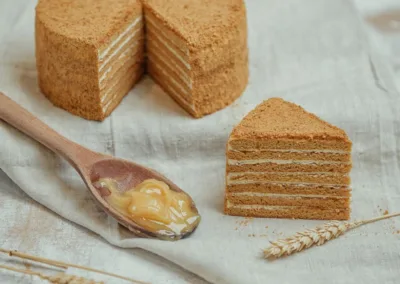Handmade With Love
Healthy Cake Recipes Without Sacrificing Taste.

The history of Napoleon’s cake
The true origin story of everyone’s favorite Napoleon cake has long been disputed.
Most do not doubt that the dessert is named in honor of the famous French emperor Napoleon Bonaparte, but the origin of the first recipe for this pastry is completely unclear, due to which there are constant disputes between different nations to prove that they were the first to come up with the cake, which is often called a pastry masterpiece.
Russians are convinced that the cake was first baked in Moscow to commemorate the centenary of the victory over Napoleon, while Italians associate the popular cake with the Neapolitan culinary history. Although its true origin is unknown, this dessert is usually classified as a French dish.
But what exactly was the first nation to come up with the Napoleon recipe?
Napoleon cake – a variant of previously baked cakes? In France, the puff pastry cake spread with cream is called “Mille-feuille” (lit. a thousand layers). The Frenchman Francois Pierre de La Varenne described the “Thousand Layer” cake in his book “French Cuisine” back in 1651.
A century later, the famous aristocracy chef Marie-Antoine Careme described mille-feuille as an “ancient dish”.
Some culinary historians claim that the French inventor and confectioner Nicolia Appert of hermetic food co-preservation was not only the inventor of preserves, but is also remembered as the creator of the Napoleon cake. When creating it, the Frenchman used the advice of his father, a famous chef: “Everything that is new is old forgotten things.” Nicolia created the cake very simply: she took sheets of puff pastry from an ancient royal cake called “La galette des Rois”, flavored with cognac, spread them with self-made cream, cut them into triangles that resembled Napoleon Bonaparte’s hat, and named these crumb-decorated cakes “Napoleon”. .
Recipes for the main ingredients of pies: dough and cream, were written down as early as the time of Louis XIV (two hundred years before Napoleon Bonaparte), so, according to culinary history researchers, “Napoleon” actually has nothing to do with the emperor.
Cake, as a combination of dough and cream, received the name “Napoleon” in culinary history only when Nicolia Appert invented her cakes. So, Nicolia Appert’s Napoleon cakes are a scaled-down version of the delicate creamy dessert Mille-feuille.
Today, Napoleon cake is one of the tastiest cakes not only in this country, but also in the whole world.
The history of Honey cake
Honey cake is a traditional cake that is made with honey, flour, eggs, and spices. It is a popular cake in many cultures, including Jewish, Ukrainian, Russian, and Polish cultures.
The history of honey cake is long and rich. The earliest known recipes for honey cake date back to the 12th century in Germany. At that time, honey cake was a simple biscuit that was flavored with nuts and spices. The cake quickly spread throughout Europe, and by the 16th century, it was a popular dessert in many countries.
In the 19th century, honey cake began to evolve into the more complex cake that we know today. In Russia, a young chef invented a new recipe for honey cake that was made with multiple layers of thin cake and a rich honey-based filling. This new recipe quickly became popular, and it is now the most common type of honey cake in Russia.
Honey cake is a popular cake for many occasions, including weddings, birthdays, and holidays. It is also a traditional cake for Shavuot, a Jewish holiday that celebrates the giving of the Torah.




